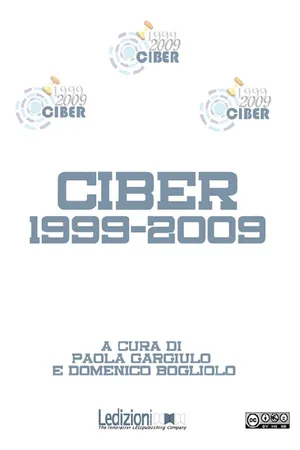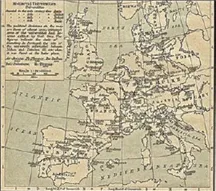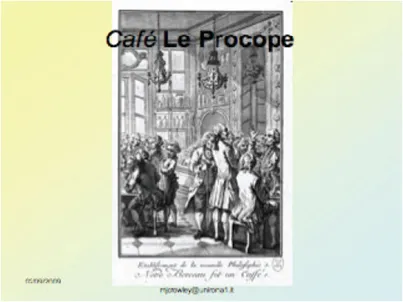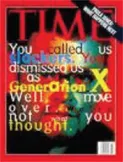
This is a test
- 154 pagine
- Italian
- ePUB (disponibile sull'app)
- Disponibile su iOS e Android
eBook - ePub
Ciber 1999-2009
Dettagli del libro
Anteprima del libro
Indice dei contenuti
Citazioni
Informazioni sul libro
Il volume comprende 14 contributi. La pubblicazione, ripercorrendo brevemente la storia di CIBER, si sofferma su diversi aspetti quali: l'evoluzione dei consorzi, la piattaforma dell'Emeroteca Virtuale (EV) e i suoi sviluppi, il comportamento degli utenti nell'uso dell'EV, la negoziazione delle clausole contrattuali, il passaggio dal cartaceo all'elettronico e il futuro delle biblioteche universitarie. Il volume chiude con tre interventi dedicati all'open access in particolare alle problematiche relative alla valutazione della ricerca e l'accesso aperto, ai vantaggi citazionali dell'accesso aperto e dedicato all'esperienza di publishing dell'Università del Salento e all'iniziativa CIBER Publishing.
Domande frequenti
È semplicissimo: basta accedere alla sezione Account nelle Impostazioni e cliccare su "Annulla abbonamento". Dopo la cancellazione, l'abbonamento rimarrà attivo per il periodo rimanente già pagato. Per maggiori informazioni, clicca qui
Al momento è possibile scaricare tramite l'app tutti i nostri libri ePub mobile-friendly. Anche la maggior parte dei nostri PDF è scaricabile e stiamo lavorando per rendere disponibile quanto prima il download di tutti gli altri file. Per maggiori informazioni, clicca qui
Entrambi i piani ti danno accesso illimitato alla libreria e a tutte le funzionalità di Perlego. Le uniche differenze sono il prezzo e il periodo di abbonamento: con il piano annuale risparmierai circa il 30% rispetto a 12 rate con quello mensile.
Perlego è un servizio di abbonamento a testi accademici, che ti permette di accedere a un'intera libreria online a un prezzo inferiore rispetto a quello che pagheresti per acquistare un singolo libro al mese. Con oltre 1 milione di testi suddivisi in più di 1.000 categorie, troverai sicuramente ciò che fa per te! Per maggiori informazioni, clicca qui.
Cerca l'icona Sintesi vocale nel prossimo libro che leggerai per verificare se è possibile riprodurre l'audio. Questo strumento permette di leggere il testo a voce alta, evidenziandolo man mano che la lettura procede. Puoi aumentare o diminuire la velocità della sintesi vocale, oppure sospendere la riproduzione. Per maggiori informazioni, clicca qui.
Sì, puoi accedere a Ciber 1999-2009 di Domenico Bogliolo, Paola Gargiulo in formato PDF e/o ePub, così come ad altri libri molto apprezzati nelle sezioni relative a Computer Science e Computer Science General. Scopri oltre 1 milione di libri disponibili nel nostro catalogo.
Informazioni
Argomento
Computer ScienceCategoria
Computer Science GeneralIV
Evoluzioni
& Frontiere
Forging the academic library ahead *
M ARY JOAN CROWLEY
Abstract
While academic degree-granting universities have been with us since the ninth century, the academic library is fairly recent. The first academic libraries only began to emerge in the late 1500’s and soon established their place as a vital and unique institution in the university. Its role has largely remained unchanged over the centuries as the guarantor of the organized collection of printed and/or other content, with a staff trained to support the learning, teaching and research needs and output of the university and community, an agreed schedule in which services are available, and the physical facilities necessary to support this. With the advent of the web and new social networking tools the community is beginning to question the role that the academic library now plays in acquiring, managing, and delivering information.
It is not the strongest of the species that survive,
nor the most intelligent,
but the one most responsive to change.
Charles Darwin
nor the most intelligent,
but the one most responsive to change.
Charles Darwin
This year we celebrate, not only the 10th anniversary of CIBER, but also the 1150th anniversary of what is said to be among the oldest continuously operating academic degree-granting universities, the University of Al-Karaouine, founded by a wealthy woman in Fes, Morocco in 859. This had already been operating for over 200 years when Bologna University, responsible for coining the word university from the latin, universitas magistrorum et scholarium, was founded.
By 1400 there were some 40 universities in Europe, many of them in Italy: Naples founded by Frederick II in 1224, Rome founded by Pope Boniface VIII in 1303, Perugia in 1308 following a papal decree by Pope Clement V, Pavia, Siena, Ferrara, to name but some. Today there are almost 4000.

<www.emersonkent.com/images/mediaeval_univer sities.webp>

The Papal Bull issued by Pope Clement V in 1308 (State Archives, Perugia)
Many of our universities started off as corporations, associations of students who felt the need to extend their range of knowledge to the emerging sciences not covered by the existing ecclesiastical schools. They pooled their resources together and drew up contracts with visiting “artisti” or scholars paying them as they deemed fit for classes in theology, law, medicine, and philosophy.
The early universities grew up around colleges, containing lodgings for students, situated in the towns, and who were often not subject to the local jurisdiction, as we learn from the 1564 “Privilegi degli studenti di Padova”, but entrusted to the powers of the academic community, i.e. the rector.
Libraries, however, were a relatively late development. Most university or faculty libraries only date from the 1600’s. The first universities didn’t have any libraries, unlike the ecclesiastical schools which often enjoyed rich endowments and whose libraries were also responsible for the actual production of books. Books were personal property and kept in private collections. The professors’ Lecture notes were available either for copying or for renting, thus limiting the number of copies that had to be made. The colleges’ first books and manuscripts were from donations or bequests, such as those of Petrarch donated first to the city of Venice, later dispersed in libraries over Europe.
These books were often housed in chests along with other precious objects, usually looked after by the university chaplain. Later they were moved to large tables containing books, according to the type of course being taught, to which they were often chained. The reader moved around the hall according to which book he wished to read, thus influencing the very architecture of the library building of the future. These became the first consultation libraries, specialized according to the courses being taught. The University of Paris, the Sorbonne, in 1338 lists 1772 entries.

When books began to be produced outside of the libraries and with the advent of printable type, the number of books in the universities possession increased.
Likewise, librarians were a bit of a rarity at the beginning of the university and did not really emerge until the late 1500’s along with the establishment of inventories and records, and library rules regarding opening times, admissions and loans.

Giuseppe Arcimboldo (Italian, ca. 1527-1593).The Librarian (Wolfgang Lazius), ca. 1562. ©
The story of the library over the last 600 years is its gradual emergence as a vital and unique institution in the university. It has come to be a place of scholarly repute, with its usefulness going beyond this.
The academic library has come to guarantee the organized collection of printed and/or other content, provide a staff trained to support the learning, teaching and research needs and output of the university and community, offer an agreed schedule in which services are available, and ensure the physical facilities necessary to support this.
The academic library has always been intrinsically caught up with the, often multiple, politics, cultures and economics of its alma mater or mother institution. It has grown as the universities themselves have expanded, with budgets and acquisitions often being administered or overseen by faculty, whether it be a large university or faculty library or a smaller department library. The library is seen as a source of prestige in the competition for students, faculty or money for research.
Technological developments in the 1990’s and the availability of online resources have changed how research and often teaching is done, and academic libraries throughout the CIBER community have successfully adjusted their services to fulfill these functions for their users.
Nonetheless, this is a particularly wrenching moment for librarians as we come to terms with the fact that some of the added value we’ve prided ourselves on providing no longer seems to be particularly valued by our own community.
Massive changes in the sheer quantity of available content, now available thanks to the “Big Deals” negotiated by CASPUR-CIBER since 1999 and generally throughout the Web, and what and how this is delivered, has everyone questioning the role that the academic library now plays in acquiring, managing, and delivering information.
With the advent of Internet, and the current massive digitization and proliferation of information, some see this as the death knoll for the academic library. The future library is often envisaged as a social gathering place more like a coffee house

<www.rfi.fr/francefr/articles/097/article_61558.asp>
or Cafè than a dusty, whisper-filled hall of dead-tree records. No more stacks, no more catalogues, no need for new spaces to house burgeoning collections, instead comfortable chairs for lounging, barstools for people watching university lectures via you tube, booths for group work or individual study, laptops, MP3’s for checkout, wireless Internet access, software suites, multimedia tools, and a cafe.
Librarians are concerned about how to best entice the Netgen, the Ygen, the Xgen, the next gen, the millennial, the digital natives, today’s F Generation away from the goozone into the library space?

How to re-engage the researcher? Get them to appreciate that we really can make a difference now that they no longer need to walk from their nearby office into the library space. Thanks to skillful negotiation by the CASPUR-CIBER consortium with the major vendors when the coffers were full online data bases, journals, e-books and resources, content is delivered straight to their desktop unmediated, apparently, by the library.
Faculty, too, besides those who had been quite happy to continue with the same photocopied Lecture Notes year after year, passed on from one generation to the next, more or less intact but only slightly grubbier, now have online “Coursepacks”, posted on their home pages for authorized student access, again thanks to the efforts of the consortium.
And let’s not forget the parents! Yes, the children of the baby boomers like to keep in daily touch, actually an average of 1.5 calls a day, with their offspring on a vast of range of topics <en.wikipedia.org/wiki/Generation_Y>, including their recent essay assignments. When they get their term assignments, they don’t Google it, they don’t even go to the library, they phone home (survey presented UKSG Torquay 2008).
The CIBER librarians have been at the forefront in their universities in keeping a dialogue open with all their users, ensuring that easy access to the online catalogue, keeping them informed of the latest developments through the library homepage, offering virtual reference services and infrastructure and services to support the needs of students and academic staff.
Training for librarians is central to the work of CIBER. Since 2003 two yearly seminars have been held to introduce librarians to new online resources and issues in response to both the evolving information environment and to coping with the requirements of our community for wider user access. These seminars, organized by and for the librarians themselves, have embraced such varied topics as user education, guided research, institutional repositories, negotiation skills for licensing materials, copyright legislation, open access, impact of usage statistics, e-books, e-preservation, new metrics, and much else. Over the course of the years these seminars are also an opportunity for vendors to present their products and for the CIBER librarians to engage with them regarding their pricing strategy and rationale.
Nor have web 2.0 developments seen our librarians unprepared. In 2008 members of the Ciber community published the first Italian version of the the “23 library things”, an OA...
Indice dei contenuti
- Copertina
- Copyright
- Indice
- Presentazione
- Ciber: fatti & cifre
- I Amarcord
- II Negoziare, trattare
- III Emeroteca virtuale
- IV Evoluzioni & Frontiere